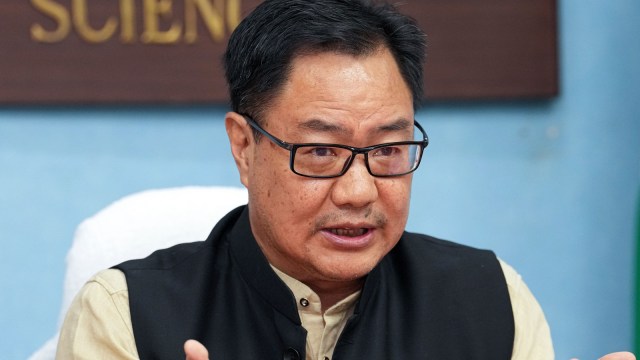Govt: Lab to monitor sea water quality and testbed to track monsoon systems inaugurated
Kiren Rijiju, Minister, Earth Sciences, on Tuesday virtually inaugurated the first phase of the Atmospheric Research Testbed in Central India (ART-CI) in Sehore district, located about 50km northwest of Bhopal in Madhya Pradesh.
 Kiren Rijiju, BJP (PTI Photo)
Kiren Rijiju, BJP (PTI Photo)India on Tuesday commissioned the atmospheric testbed facility near Bhopal. The testbed, works of which began in early 2018, is equipped with high-end instruments to record several vital parameters that will be fed into improving the weather models besides facilitating advanced studies on the Indian monsoons.
Kiren Rijiju, Minister, Earth Sciences, on Tuesday virtually inaugurated the first phase of the Atmospheric Research Testbed in Central India (ART-CI) in Sehore district, located about 50km northwest of Bhopal in Madhya Pradesh. He also inaugurated the Coastal Research Laboratory (CRL) established in Visakhapatnam’s Dolphin’s Nose area.
Pune-based Indian Institute of Tropical Meteorology (IITM) is spearheading the research activities at this first-of-its-kind testbed facility built at a cost of Rs 125 crore, whereas Chennai-based National Centre for Coastal Research (NCCR) will host and co-ordinate activities at CRL.
India receives nearly 70% of the country’s rainfall during the June to September southwest monsoon season. It is the interactions between the southwest monsoon winds and westward- moving low pressure systems or depressions, that sustain the rainfall activity over the core monsoon zone. Agriculture in this zone, spanning from Gujarat to West Bengal across central India regions, is rain-fed. The area around Silkheda in Sehore lay directly in the path of rain-bearing systems — the low pressure systems or depressions originating in the Bay of Bengal — making it an ideal area to study their characteristics and also the properties of the clouds embedded in them.
” The testbed in Bhopal is a unique observational facility and will help better understand the cloud systems, land-atmospheric systems and tracking of the low pressure systems and depressions. With climate change, rainfall associated with these systems during the monsoon season have been becoming erratic. Data obtained from the testbed facility will be assimilated and used to improve the forecasts,” said R Krishnan, director, IITM.
Nearly 25 high-end instruments like the aethalometer for aerosol studies, cloud condensation nuclei counter, laser ceilometer to measure cloud sizes, micro rain radar to calculate raindrop size and its distribution have been installed. A Ka-band cloud radar and a C-band doppler weather radar will also help track the movement of rain-bearing systems over this zone.
“Blue economy and climate change are becoming hot topics. Indian scientists are breaking new grounds and for a large country like India, such centres are critical,” Rijiju said.
At the inauguration of the lab, MoES Secretary M Ravichandran said: “Water quality monitoring is key in tracking the health of the seas. With India’s Blue Economy taking shape, CRL will have a key role to play in future. CLR should have nodes in each of the coastal states of India…”







